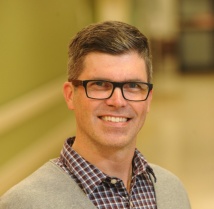A medical researcher at Dalhousie University has received over $2 million for research to improve radiation treatment for cancer.

James Robar, a medical physicist in Halifax, said he and his team are working on five different technologies to improve the cancer treatment, which around half of all cancer patients receive.
The money Robar received in late July comes from two sources, a private company called Brainlab and the Atlantic Innovation Fund. He said the funding will mainly go towards hiring people, including two graduate students and a project manager, and a smaller portion towards buying equipment.
One of the technologies being developed is an algorithm called FourPi. Robar said it takes into account all possible ways to target a tumor with beams of radiation, and then selects the one that will damage surrounding organs the least.
“It’s a challenge because even though these rays can interfere with and destroy cancer cells, they can also harm normal tissues,” he said.
Robar said that while the core technology behind radiation therapy isn’t new, improvements are significant because of how widely radiation is used and the benefits to people with cancer from better treatment. He said more accuracy makes the radiation less toxic on the patient’s body. Radiation can only be used on cancers that cause tumors, not ones in the blood.
He said there are nine machines in Nova Scotia that can administer radiation treatment. Seven are in Halifax and the other two are in Sydney.
Another technology Robar’s team is developing is a mask that keeps a patient’s head stable during treatment. Instead of having to insert rods into the person’s skull to stabilize it, the mask tracks the head’s movement during treatment and the beams can be adjusted accordingly, he said.
Medical physicists are different from medical doctors, according to Nancy Barrett, the executive director of the Canadian Organization of Medical Physicists. Rather than being hands-on with patients, they specialize in using x-rays and administering radiation. They are also involved in research and with inventing new technologies.
While Robar works out of Dalhousie University and the technology was developed there, he said they have licensed it to Brainlab, a company that will develop and release a marketable product. He said a product based on FourPi is currently undergoing regulatory approval to be used in hospitals.
Andrea McCormick, a manager at the Industry Liaison and Innovation office at Dalhousie, said commercialization is an important step to receive funding from the Atlantic Innovation Fund. She said the Atlantic Canada Opportunities Agency (ACOA), which administers the fund, provides large-scale funding, but to a relatively small number of applicants.
“We want to keep our technology local, build them locally so we can develop technology in the Maritimes that stays in the Maritimes,” McCormick said.
Lee MacDonald, a medical physics PhD student working with Robar, said the fact that the technology will soon be used is one of the most gratifying aspects of his work.
“It’s been certainly motivating,” he said. “It’s rewarding to work on something like this and have it be able to reach patients within a reasonable time frame is really rewarding.
Robar is also the head of medical physics at the Nova Scotia Health Authority. He said working as a medical physicist allows him to approach research from a different angle than a medical doctor would.
“We want to be less invasive and kinder to patients,” he said. “We want to improve their experience, but we don’t – and we can’t- compromise on the accuracy of the treatment delivery.”
